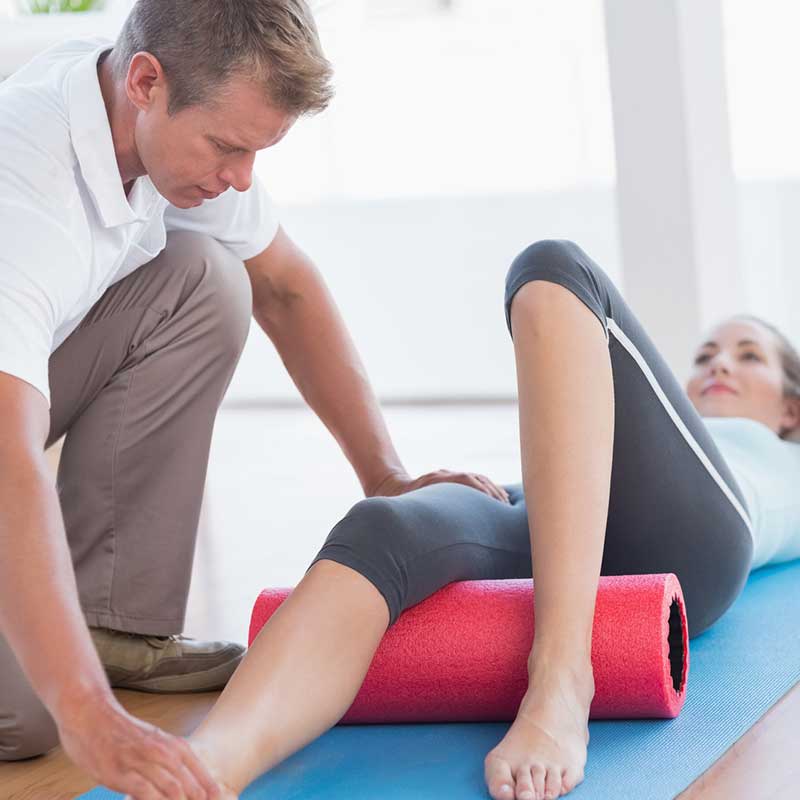Exercise Rehabilitation To Assist Injury Management
Our practitioners understand that Chiropractic, Myotherapy & Remedial Massage treatment alone is often not enough to assist with your recovery and long term rehabilitation. We’ve proudly undertaken dedicated study into Sports Science and Exercise Rehabilitation so that we can provide our many clients with a comprehensive rehabilitation strategy. Exercise rehabilitation plays an integral role in the recovery of our clients. The benefits of an individually tailored and specific exercise rehabilitation regime include improved injury healing time, reduced pain and most importantly reduced risk of re-injury. It’s important to recognize that a program for one person is not appropriate for someone else. You can be assured that your regime is adapted and altered throughout each stage of your recovery. Clients usually commence their management with static stretches and spinal mobilisation. As your rehabilitation progresses, exercises will be aimed at improving functional strength, power, agility and proprioception.

Phase 1: Regain Normal Range Of Motion & Biomechanics
Basic stretching forms an important aspect of your active and passive management within our clinic. We provide all clients with stretching exercises to enhance flexibility, mobility, improve joint function and reduce spasm and pain. There are a variety of stretching types which we recommend during your exercise rehabilitation:
- Static stretching involves stretching that require you to remain in a particular pose for a specific period of time. Static stretching elongates myofascial fibres to assist with reducing tightness and spasm.
- Dynamic stretching incorporates movement into stretching to facilitate a greater lengthening upon the muscle.
- Post-isometric relaxation (PIR) stretching is effective for severely acute cases of tension, spasm and stiffness. Involves taking a joint or muscle to a mildly stretched position and exerting a gentle contraction against resistance. No pain or discomfort should be felt
- Proprioceptive neuromuscular facilitation stretching is similar to PIR stretching however involves taking the specific joint or muscle into a significantly greater stretch prior to exerting a contraction against resistance.
- Passive stretching are stretches performed with the assistance of your therapist.
Phase 2: Restore Muscle & Soft Tissue Tensile Strength
The goal of clinical strengthening exercise is to improve your stability because following injury there may be asymmetries in muscle recruitment patterns. It’s essential to correct these to further reduce the risk of future injury. Examples of strengthening exercises may include:
- Weighted eccentric wrist flexion during Tennis elbow rehabilitation.
- Transverse abdominus activation in the management of lower back pain or distal cross syndrome.
- Prone scapular retraction in the management of proximal cross syndrome or neck pain.
- Assessing symmetry between activation patterns of gluteals and hamstrings to reduce the incidence of lower back dysfunction such as Sciatica.
Phase 3: Restore Proprioception, Agility & Power
Proprioception is how your body determines its position in the environment. Your body contains receptors and sensors which are located within muscles, tendons and ligaments. This information is sent to the brain where it’s processed. Your brain then sends a command to the rest of the body to make necessary changes to reduce the risk of injury. Examples of proprioceptors include muscle spindles and golgi tendons organs. In order to improve a persons proprioception we prescribe a range of balance exercises. An example of this is performing balance on a wobble board or cushion following an ankle sprain injury.
